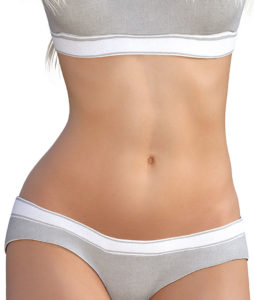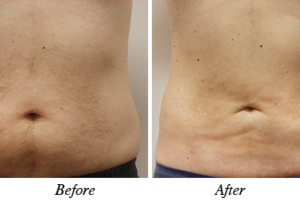Body Cosmetic Surgery | Liposuction
No matter how regular and strenuous you train, and how strict you maintain your diet, you will always find some part of your figure that is not shaping up according to your wishes.

With the liposuction method and the body shaping technique, we together we can achieve the look you’ve always wanted.
Liposuction is a procedure of plastic surgery that removes excess fat from the body and is considered a very popular option in the field of cosmetic surgery.
People opt for liposuction to improve the shape or contours of their bodies. They most often want to remove excess fat from areas such as the thighs, hips, buttocks, abdomen, hull, neck or back. Liposuction is intended for those who have tried both diet and exercise and cannot get rid of these stubborn fat areas.
Liposuction is a surgical technique that draws out fat deposits from certain parts of the body, in order to make it look more beautiful and more desirable.
Liposuction is one of the most popular methods for rapid body shaping.
Liposuction is not a total treatment for weight loss. It has its own risks and possible complications, so it’s important to talk to your doctor before you take this procedure into account.
Liposuction can be used in almost all areas of the body: buttocks, thighs, around the hips, stomach, upper arm, neck, upper and lower back.
This procedure is also called lipo-sculpture of the body. Liposuction can be combined with other methods, such as abdominoplasty. During stretching of the skin around the abdomen, the excess skin is removed and the rest is stitched while surrounding areas are treated with liposuction to achieve the desired contour.
There are several variations in basic liposuction techniques.
The method that will be applied to you depends on the number of individual factors our surgeon will discuss with you in part of the consultation and will strive to make a true and personalized approach to liposuction procedure itself.
Some of the techniques that can be used during the liposuction procedure:
Tumescent liposuction: A solution containing a small amount of adrenaline and local anesthesia is injected into the subcutaneous fat, and thus permits liposuction. This is a commonly used technique at Atlas when liposuction is done over a larger area and serves to minimize blood loss. It also increases the total amount of fat that is removed, and greatly improves patient comfort during and after the procedure.
Ultrasound Liposuction: This is a two-step procedure, that uses a sound wave to break down and dissolve the subcutaneous fat, before it is then sucked out. This technique is very useful in highly fibrous fatty tissues, such as the upper part of the stomach, enlarged male breasts, and areas on the thoracic and hip joints.
Laser liposuction: Similar to ultrasound liposuction, but with the help of lasers, the fat tissue breaks down and is thus evacuated by the classic liposuction method.
Syringe: This method is often used to treat sensitive parts of the body, such as the face and neck. In these delicate cases, our experts prefer to use a syringe method rather than a liposuction pump. In this way they work more precisely, paying close attention to finer and defined detail, our experts prefer to use thinner, finer tubes. Regardless of the above mentioned choices, and the liposuction technique applied, our experts are oriented towards the choice of thinner and finer tubes. The use of these thinner and finer tubes, and application greatly affect the overall figure and final results.
Depending on the area being treated, our expert team decides on the level of anesthesia that will best serve your needs.
What to expect during Liposuction?

Liposuction is a procedure that requires general anesthesia. This means that during the liposuction operation you will not feel any pain, however, in 60% of cases, you will experience pain after the procedure and during the recovery period that will be controlled by prescribed painkillers.
Depending on what part of the body requires liposuction, you may have a shorter or longer stay in the hospital.
Before liposuction begins, a surgeon will mark the areas of your body to be treated.
You will then get general anesthesia – which means that during the procedure you will not be awake.
There are only a few different liposuction techniques. But what is common to them is the use of a thin tube, called cannula, associated with a vacuum for sucking up body fat. The cuts are usually very small (only 3 mm) and through them a fine cannula is introduced to the desired location, from which the excess fat is sucked through the fat-absorbing machine which is known as – the liposuction.
To reduce pain after the procedure:
– take all prescribed medicines, including pain medication
– wear recommended compression clothing
– relax and try to avoid stress
– drink liquids
– avoid salt, which can increase swelling (edema)
Is Liposuction the procedure for You?
Some people are good candidates for liposuction, others should avoid it.
Good candidates for liposuction are:
– do not have significant excess skin
– have good elasticity of the skin
– have a good muscular tone
– have fat deposits that will not go away with diet or exercise
– are in good physical condition and overall health
– they are not too obese
– do not smoke
Liposuction should be avoided if:
– you have chronic health problems
– you have poor immunity
– you have an extremely overweight
– if you smoke
– you have excess skin
– you have a history of diabetes, cardiovascular disease, deep vein thrombosis, or epi-attacks
– you are taking medicines that can increase the risk of bleeding, such as blood thinners (warfarin)
Recovery (postoperative recovery)
The effects of liposuction are visible almost immediately. You should expect some bruises, swelling and pain for up to at least 2 weeks after the procedure. After the liposuction procedure, you will be equipped with an elastic compression belt or “suit” to control swelling and speed up the recovery.
Most patients return to their regular activities within a week, but recovery depends on several factors and is very individual.
Our experts recommend walking and various types of mild exercise for maximum blood flow and faster recovery. More demanding activities should be avoided for a month or within a period of time determined by your surgeon.
You will probably be prescribed antibiotics in the first week after the intervention.
Are liposuction results persistent?
Fat cells are permanently removed during liposuction. But you can gain the weight back, with new fat cells, which usually pass into different areas of your body.
To maintain your new body shape after surgery, follow a diet that includes lots of lean proteins, fruits and vegetables, whole grains and low-fat dairy products. And workout regularly.
What are the risks of liposuction?
Liposuction is like any surgical intervention with possible risks.
The risks during the procedure are:
- small wounds or injuries to other organs
- complications due to anesthesia
- burns from the equipment, such as ultrasound probes
- nerve damage
- shock
Risks following the procedure include:
- blood clot in the lungs
- too much fluid in the lungs
- lumps of Fat
- infections
- hematoma (bleeding under the skin)
- seroma (fluid leakage under the skin)
- edema (swelling)
- skin necrosis (skin cell death)
- reactions to anesthesia and other drugs
- problems with the heart and kidneys
Risks during recovery include:
- problems with the shape or contours of the body
- wavy or rough skin
- numbness, bruising, pain, swelling and sensitivity
- Infections
- fluid imbalance
- scars
- changes in the sensation and feel the skin
- changes in skin color
- healing complications
What are the long-term adverse effects of liposuction?
Liposuction permanently removes fat cells from targeted areas of the body. So, if you gain weight, fat will still be kept in different parts of the body. New fat can appear deeper under the skin. Very rarely, patients experience permanent damage to nerves and changes in skin sensation. Others may develop depression or indentation in areas that are sucked up, or may have uneven or wavy skin that does not disappear.
Please Note
Liposuction is an optional cosmetic procedure that has potential risks. It is not a substitute for weight loss, nor is everyone a good candidate for this method. Consulting your doctor will help you decide whether you are a candidate for liposuction or not.
For more information, please contact our Call Center at Atlas General Hospital: +381 11 785 88 88
- Does liposuction get rid of cellulite?
-
Liposuction will not get rid of cellulite, but it may help to make it less noticeable in some areas.
- Can I transfer fat from one area to another with my liposuction procedure?
-
Absolutely! Often patients will have fat transferred to the buttocks or the facial area, depending on where they would like to see more volume. Please inform our experts of the areas you hope to improve with fat grafting, to see if you are a good candidate for this procedure.
- What restrictions will I have after having liposuction?
-
You will have certain physical restrictions for 4-6 weeks after surgery. This means you cannot exercise, go to the gym, or do any strenuous activity that will increase your heart rate during that time period.

